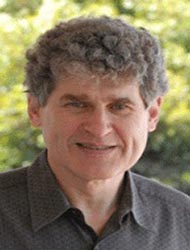
David Kleinfeld is a Distinguished Professor of Physics and of Neurobiology (courtesy). He trained in experimental physics and has focused his research efforts on network and computational issues within nervous systems using a wide range of experimental and analytical approaches, including the design of new instruments.
One focus of David’s laboratory is on the sensorimotor loops that drive active sensing of the environment. This work makes use of the vibrissa system in behaving rodents, in which animals scan their local environment with long hairs. David discovered that object location is coded in coordinates that are based on the region of interest. Most recently, his laboratory discovered the primacy of breathing in the coordination among rhythmic orofacial motor actions, which includes breathing along with whisking, chewing, licking, and sniffing. Ongoing work addresses cortio-brainstem loops in the control of active sensing and the formation of orofacial behaviors from brainstem motor actions.
A second focus is on the angioarchitecture of the rodent brain and the underlying flow of blood. These studies identified the relation of vascular topology and geometry to the nature of flow. Of medical relevance, David found that blockage of even a single penetrating vessel, i.e., a vessel that shuttles blood from the surface network to the subsurface microvascular network, leads to a microstroke that appears similar to those seen in vascular dementia. Of biophysical relevance, David completed the first vectorized map of all vessels within cortex and used it to gain insight into the nature of flow patterns and the perturbation of natural patterns by neuronal activity and vascular occlusions. Ongoing work addresses the coupling of neuronal activity and vasodynamics.
David is heavily committed to the education of young neuroscientists, currently leads the Computational Neuroscience Specialization, and has co-directed or lectured in postgraduate summer schools since 1993.